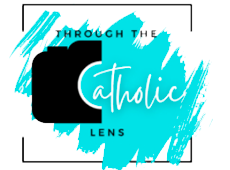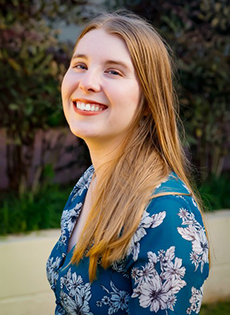
'Moana' and authentic identity
Wednesday, September 6, 2023
Emily Chaffins
Editor's note: This is the first in a new blog series entitled Through the Catholic Lens. Contributors will focus on looking at art, media, and entertainment through a Catholic worldview. The idea for this blog came from Emily Chaffins — this month's author — who will continue to contribute as well as curate contributions from other authors. Chaffins is a Florida Catholic freelancer currently pursuing a Master of Fine Arts degree in creative writing from Florida International University. She is a member of Our Lady of Lourdes Parish in Miami. Through the Catholic Lens will be posted the first Wednesday of each month.
Can a seafaring “non-princess,” a magical fishhook, and catchy Lin-Manuel Miranda songs have anything to do with Pope John Paul II’s “Theology of the Body”?
Yes, they can!

Emily Chaffins
The 2016 Disney film “Moana” captures imaginations with relatable characters, a stunning film score, and an exciting plot — and it’s about to get better.
Using a Catholic worldview to delve into art and entertainment can be mind-blowing. Although artists may not have consciously intended for their work to be seen through the Catholic lens, we can often find extraordinary meaning if we look at the art purposefully.
Let’s demonstrate.
What’s Theology of the Body?
Before delving into the meaning behind “Moana,” let’s start with background on the Theology of the Body (TOB). TOB is a series of talks by John Paul II later published as a book. TOB encompasses the Church’s teachings on human love, every person’s vocation to love, and how to live out our God-given mission.
Living a TOB culture boils down to living the “paradigm of the gift.” This is a fancy phrase that means realizing that everything is a gift — yourself, others, the world — and that God sees you as a gift.
This realization radically changes the way we live. In seeing ourselves, the people around us, and the world as gifts, we are struck with awe. We live life remembering that people around us are gifts, and we treat them accordingly — with love, respect, and dignity. Having a TOB culture is about living in wonder, recognizing the beautiful meaning in the world and all that befalls us.
Before discussing “Moana,” let’s look at fallen vs. authentic masculinity and femininity.
God created us male or female. These two identities have different but complementary gifts. Choosing to live according to authentic masculinity/femininity means using those God-given gifts in a self-giving way, building up ourselves and others. In contrast, choosing to live according to fallen masculinity/femininity means using those God-given gifts selfishly, hurting ourselves and others in the process.
“Moana” is full of examples of authentic and fallen masculinity and femininity.
“Moana”: Elevator-speech summary
The story begins with a creation myth. Te Fiti is an island/goddess who brings life to the world with the gift of her heart (depicted as a small, green stone nestled in the core of the island). However, the demigod shapeshifter Maui snatches the heart from the island. Things don’t go quite as planned. When he steals the power of life, Maui actually spreads death. Islands decay. The heart of Te Fiti sinks below the sea, along with Maui’s fishhook, a gift from the gods that enables him to shapeshift.
Hundreds of years later, the god-like ocean entrusts the heart of Te Fiti to Moana, a village chief’s daughter. Her mission is to find the marooned Maui so they can collaborate to return the heart to the island of Te Fiti before Moana’s home and the other islands die. They must also contend with lava monster Te Ka, who destroys anyone who gets near the island of Te Fiti.
Egotistical Maui’s insecurity stems from his mother abandoning him. He was adopted by the gods and given the fishhook. To gain the love of humans, Maui wrongly used his gifts to steal the power of life, and this act left him empty.
Moana, the way-finder, also has much to learn. At one point, Moana fails to listen to Maui, putting them in mortal danger and badly damaging Maui’s fishhook — resulting in their temporary separation.
It’s only when Maui and Moana recognize that the mission requires them both to succeed — the cooperation of masculinity and femininity — that they can face the monster Te Ka, cooperate to use their distinct gifts, and succeed.
Meaning in “Moana”
The film’s climax arrives as Moana and Maui race against the fireball-throwing Te Ka to reach the island of Te Fiti with the heart. Moana is shocked to find barren rocks where the beautiful island of Te Fiti once stood. Suddenly, she realizes the truth: The monster Te Ka is really a distorted (literally heart-less) Te Fiti!
With his fishhook destroyed, Maui is vulnerable. In a self-sacrificial act of authentic masculinity, he shouts to distract Te Ka so the monster will attack him instead of Moana.
Before Te Ka can kill Maui, Moana raises the heart to Te Ka. Moana walks toward the furious monster, the ocean parting so the fiery monster can approach without being destroyed by water. Moana reminds Te Ka of her true identity, that of life-giving Te Fiti: “I know your name. They have stolen the heart from inside you, but this does not define you. This is not who you are. You know who you are — who you truly are.”
Moana’s gift of authentic femininity enables her to empathize with Te Ka and “get to the heart” of the problem, making Te Ka feel safe, and allowing Moana to put back the heart.
Immediately, Te Ka is transformed into Te Fiti. Embracing her true identity of authentic femininity, she spreads life to all the islands. Maui receives a new fishhook, his gifts redeemed, and he’s able to raise islands again and so participate in giving life. Finally, Moana takes her place as the leader of her community, wiser and more confident.
Tell us what you think
Was this post thought-provoking? Can you find any other TOB connections to “Moana”? If you haven’t already, watch the movie and join the discussion.


Comments from readers